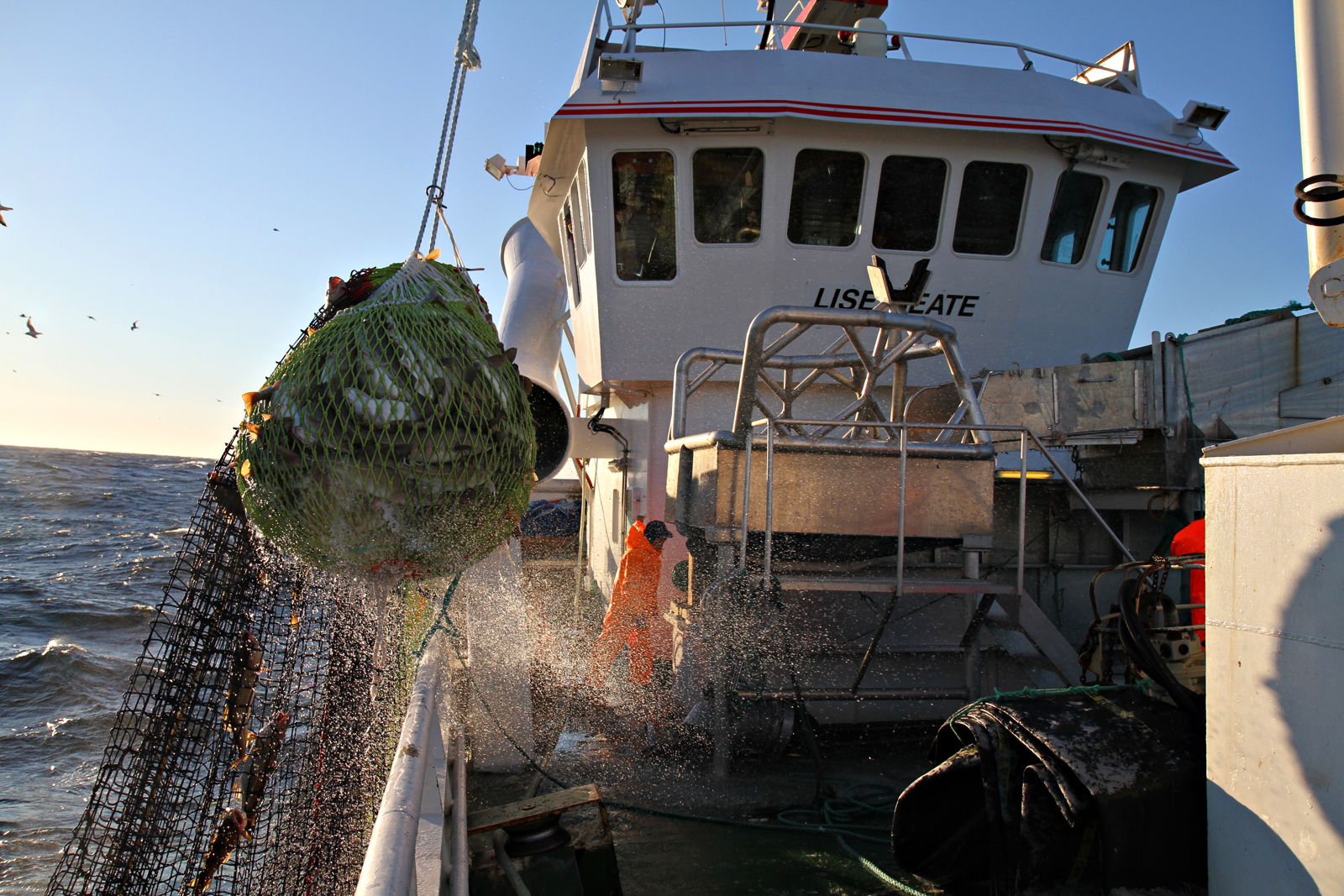
In Deep Water
An experienced fisherman will easily find his way to the fishing grounds. Once he gets there, a Simrad echosounder is good to have onboard. For 60 years, these instruments have helped fishermen like Oddvar Nes.
-
Text:CHRISTINA FJELLSTAD
Photo:BJØRN-OWE HOLMBERG
-
Ove Ronny HaraldsenGroup Communication Manager
“They forecasted gale force winds today. Can you take it?” It’s just past five in the morning, but fisherman and skipper Oddvar Nes from Senja has already been at work for several hours. He is standing in the pilothouse of his own fishing boat, Lise Beate. Outside, the skies are clear, with the moonlight reflected on the calm seas. He plots his heading to the fishing grounds on his electronic sea chart. We are aiming for the Mallans ground, some 30 nautical miles off the coast of Senja. This year’s cod fishing has now started.
Every year, cod migrate from the Barents Sea to the northern stretches of the Norwegian coast to spawn. Between January and April, the cod settle in the area between Finnmark and Trøndelag, providing stock for the most important cod fishing season in Norway. The advantageous conditions at this time have made fishing into an important industry throughout the region, and fishing is the main industry for Senja. Oddvar Nes has worked as a fisherman for 38 years and has had his own boat for 28 of them. He purchased this boat, Lise Beate, named after his two daughters, in 2003. When asked if he ever wanted to do any other job, Oddvar firmly replies: ” No, it’s never crossed my mind!”
A LONG DAY’S FISHING
As owner of his own boat, Oddvar Nes no longer has to get involved in the most physically demanding work onboard, gutting the fish and hauling in nets. There is no doubt in his mind however that being a boat owner is difficult enough in itself. When sailing out from shore in the very early morning or late at night, he is the one in the pilothouse while the crew is fast asleep under deck.
He only sleeps when he has time to do so, and that is not that often. Once the cod season has opened, you don’t stop until you’ve fished your entire quota of 410 tons. ” At times, I’ve worked non-stop for 36 hours in the pilothouse. We never know how long a day will be until we see how much fish we can catch. On a good day, we can haul in 10 tons with one cast. The ideal catch is 4-5 tons at a time. This allows the crew time to gut the fish before a new load comes overboard, and then we know we can supply high quality fish,” explainsOddvar. The fish is gutted onboard the Lise Beate, then pumped ashore at the processing plant once they arrive back in Senja. Nothing goes to waste. The fish liver, roe and fillets are delivered for processing and distribution to Norway and abroad.
FANTASTIC ECHOSOUNDER
With so many years of experience, Oddvar is very familiar with the fishing grounds for the cod. As a pelagic species, the cod swims near the seabed but spawns in areas where the sea is more shallow, and where warm and cold currents meet. Despite this, there is always a huge variation between the fishing grounds and this is where Simrad’s ES60 echosounder proves invaluable. “The echosounder is fantastic. You can see where the fish are. Even if it only shows us what is directly under the boat, and not where the actual net has been cast, it provides us with a good indication that there is fish in the area. There’s no doubt that it makes fishing much more efficient,” confirms Oddvar Nes.

Simrad manufactured their very first echosounder in 1951. Since then, considerable advances have been made. Today, echosounders are practically a standard fitting onboard all fishing boats. Marketing Director at Simrad, Mads Didrik Dahl, believes that the echosounder has revolutionised fishing. ” Both sonars and echosounders have allowed fishermen to be more efficient and, not least, more selective. Before, the practice was to sail out to well-known fishing grounds, cast out your nets and hope for the best. Today, fishermen can sail to a number of locations, find the fish much more quickly and, what’s more, find the right type of fish. This provides savings in fuel, money and the environment,” confirms Mr. Dahl. Simrad’s product range now features a whole selection of products, but the echosounder is without a doubt the most popular product throughout the company’s history.
The very early versions produced readouts in black and white on wet paper. In time, the readouts were printed on dry paper and resolution improved. It was not until 1984 that the company could introduce 4-colour screens with 36 pixel resolution. Today, customers can choose from a number of frequencies, effects and transducer types. The most modern echosounders not only show you where the fish are, but also the density of the shoal, size and type of the fish. Sales of the ES60 have now reached 3,000 worldwide. The ES60 is an invaluable tool onboard the Lise Beate. ” Can you see them there, we’re going to get them,” says Oddvar happily as the echosounder screen lights up. In addition to the echosounder, the Lise Beate is also fitted with an SH90 high frequency sonar and SX90 low frequency sonar from Simrad but these are not used when fishing for cod. ” We only use the sonars when fishing for shoals of fish, like pollack and herring when we fish in shallow waters. The SX90 can be used to find fish at remote distances, while the SH90 allows us control of fish at casting distance,” explains Oddvar.
FISHING FOR MONEY
We have now sailed far off the coast and dawn is about to break. The sun is on its way up from behind the mountains, sending a band of red light to announce its arrival. At the same time, the crew is on their way up from below deck. After three and a half hours of sailing out to the fishing grounds, Oddvar has now found fish on the echosounder. It is time to cast out the Danish seine, a special net used to fish from the seabed which can go down to 100 metres. ” First we have to cast out the buoy, then we let out the ropes. They are 18-1900 metres long. Once that has been done, the nets are released and attached to the ropes which are thrown out in a arch. It’s important not to throw the nets out against the current,” explains Oddvar, pointing at the screen in the pilothouse which displays the current.
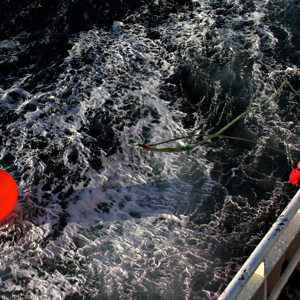
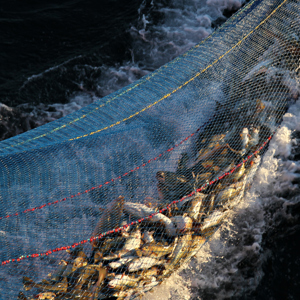
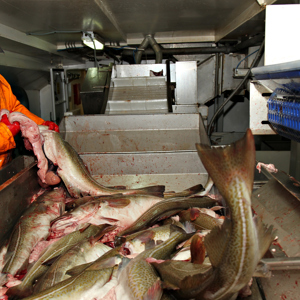
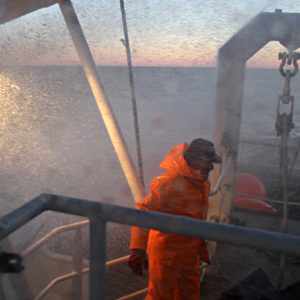
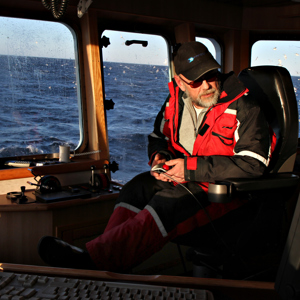
Once the nets are cast, all they have to do is wait. After an hour, the two rope winches start to draw closer together, a sign that the net has reached the seabed and that it is time to haul it in. The movement of the net chases the fish in towards the net opening. After a while, the net appears on the water’s surface and is hauled up onto deck. It has a large mesh to allow smaller fish to escape. Large, fat cod tumble out and down a shaft on the deck, all the way to the bottom of the boat where they will be gutted. ” It’s the big fish we’re after. They’re the ones that bring in the money. We get a much better price per kilo for them,” explains Oddvar, judging by eye that the largest fish from today’s catch will provide 7-8 kilos of gutted fish.
FISHING FORTUNE FAILED
Although this season has been good for cod fishing, it does not appear that we have brought fishing fortune. Oddvar estimates the first catch to be around 2.5 tons. The echosounder shows that the cod are swimming closer to the surface than usual, but nobody can understand why. The VHF radio onboard is used frequently to communicate with other boats nearby and to find out if there is more fish to be found in other areas. The Danish seine is cast in a new area, but the result is even poorer than before, with just under 2 tons. While the crew of five has started gutting the fish below deck, dusk starts to fall. At 15.57 precisely, the sun disappears into the sea. The calm, mirror-like seas have now whipped up into white-topped waves. As the radio persists in forecasting weather conditions, Oddvar has decided that he may as well turn it off. Although the day is almost over and the wind is rising, he has decided to cast out the Danish seine for a third time – and finally gets a satisfactory result.
The last catch is hauled onboard and is most definitely the largest of the day, with around 3-4 tons of fish. It’s time to return to harbour. The sea chart tells us that we have four hours to sail before the Lise Beate reaches shore. Outside the pilothouse, a gale force wind has picked up and the waves crash hard against the bow. It will be yet another long, sleepless night for skipper Oddvar Nes and his Lise Beate.